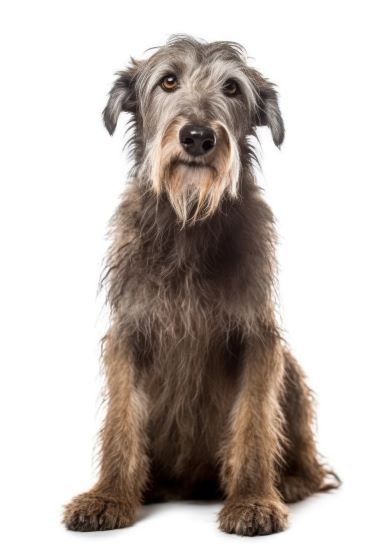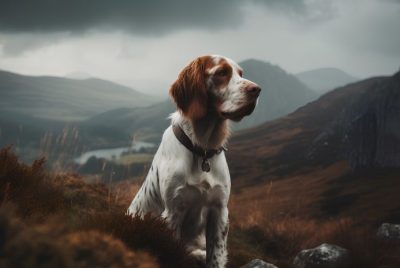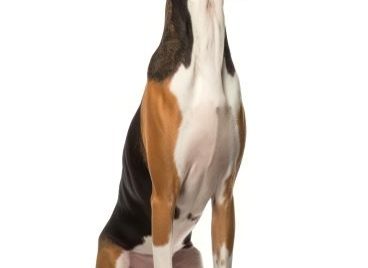Scottish Deerhound Traits & Characteristics
Introduction: A Glimpse Into the Scottish Deerhound
Ahh, the Scottish Deerhound, a breed of elegance and grandeur. As a lover of large breeds, I’ve always been enchanted by their noble appearance and fascinating personality. But what lies beyond that royal coat and regal stance? Let’s unravel the world of the Scottish Deerhound.
History of the Scottish Deerhound
Delving into the past, the Scottish Deerhound, known for its prowess in hunting red deer, dates back to the 16th century in Scotland. Once the reserved companion of nobles and royals, this breed’s lineage carries a rich history that has shaped its traits and characteristics.
Physical Characteristics
A Scottish Deerhound is hard to miss! This giant breed, with males standing up to 32 inches and females up to 30 inches, carries itself with a quiet dignity. Their wiry, harsh coat, usually in blue-gray or other shades, shields them from harsh weather, while their long tail and tasseled ears give them a unique silhouette. Doesn’t it paint a majestic picture?
Personality and Temperament
Beneath the tough exterior, a Scottish Deerhound is nothing short of a gentle giant. Known for their calm demeanor and affectionate nature, they are often described as “a big dog with an even bigger heart”. They value their quiet time but wouldn’t hesitate to join you on a nature trail.
The Life of a Scottish Deerhound
Typical Daily Routine
What’s a day like in the life of a Scottish Deerhound, you ask? Though they love lounging around (a bit of a couch potato, if you will), they need their daily dose of exercise. After all, they’re hunters at heart!
Interaction with Humans and Other Animals
Their gentle demeanor makes them great companions for humans, even children. They can be wary of strangers, but rarely show aggression. However, their hunting instincts might kick in around smaller pets, so it’s best to socialize them early.
Health and Wellness
Common Health Issues
Like many large breeds, Scottish Deerhounds are prone to certain health issues. These include heart conditions, bone cancer, and hip dysplasia. Regular veterinary check-ups and preventative measures are vital.
Exercise and Dietary Requirements
With their hunting heritage, Scottish Deerhounds need ample space to run and play. A balanced diet, designed for large breeds, helps to maintain their health and vitality.
Training a Scottish Deerhound
Training Challenges
Their independent nature might pose a challenge during training. Patience is key when training a Scottish Deerhound. Can you keep up?
Training Tips
Positive reinforcement works wonders with this breed. Keep sessions short, fun, and rewarding, and you’ll have a well-behaved companion in no time!
Owning a Scottish Deerhound
Suitable Home Environment
A spacious home with a fenced yard works best for these active dogs. Apartments are a no-go. But remember, they love to be near their humans, so don’t leave them alone for too long.
Cost of Ownership
Owning a Scottish Deerhound comes with its costs. From food to vet care and grooming, it’s crucial to consider these before welcoming this gentle giant into your home.
Conclusion: Is a Scottish Deerhound Right for You?
Scottish Deerhounds are not just pets; they’re companions, loyal and loving. If you’re up for the challenges and rewards that come with owning this breed, a Scottish Deerhound might just be your perfect match.
FAQs
1. Are Scottish Deerhounds good with children?
Absolutely! Their gentle and patient nature makes them great companions for children.
2. Can a Scottish Deerhound live in an apartment?
Due to their large size and active nature, a spacious home with a fenced yard is more suitable.
3. How much exercise does a Scottish Deerhound need?
They need regular exercise to keep them fit and healthy, a good run in the yard or a long walk would suffice.
4. What’s the lifespan of a Scottish Deerhound?
Typically, they live around 8-11 years, but this can vary based on genetics and lifestyle.
5. Are Scottish Deerhounds hypoallergenic?
No, they’re not considered hypoallergenic. Regular grooming can help manage their shedding.




